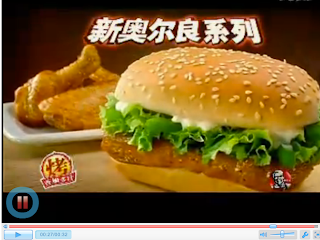The Nature of Multicultural
Marc Gobe, the author of Emotional Branding, talks about branding for a multicultural brand in Chap 2 "Disconnection Alert: The U.S Melting Pot is Hot!". As more companies are earning profit overseas, a multicultural and multinational corporation has to realize that "People want to deal with corporations that are responsive and sensitive to their unique needs." In other words, branding a multicultural brand is about building a relationship with people's own culture.
Case: KFC
- A leading multicultural brand in the global stage
Source: Yum!
KFC in China
- A local Chinese name for KFC in China, with offering local taste of fish, shrimps, egg tarts, and etc.
- KFC is opening one new restaurant a day, on average with the intention of reaching 15,000 outlets.
- "Built a leading 40% share of the Chinese fast food market through patiently tailoring its product offering to local tastes and building a strong team of local managers." ---HBR
- "KFC would not be seen as a foreign presence but as part of the local community. Out opportunity was to take the best ideas from the U.S. fast food model and adapt them to serve the needs of the Chinese consumer." ---CEO Sam Sue of KFC China division
- Abandoning the dominant logic behind its growth in the U.S.: a limited menu, low prices, and an emphasis on takeout
Collection of Toys to Bond Relationships
KFC in Chinese market usually provides gifts for purchasing combos. Those gifts are for collections, often for collections of a series of toys. Those reward activities increase intimacy with KFC brand, and bring more acticities for friends and family gathering.
Familiar Cooking Styles
As Chinese people prefer cooked food, KFC made those fried coats with cooked food inside. The image above displaces the "Shrimp Hat," which grabs attention by its cute design and cooking style.
Meets People's Desire to Try Different Western Styles Food
The image displays above is "New Orleans Series." Even though Chinese people are addicted to their cooking style food, they have the desire to try different Western Styles food. KFC China division caught this important insight and applied it in their marketing strategy for Chinese market. For "Orleans Wings," they named them directly after Orleans, the city in France, and made the wings seem similar to the real Orleans wings but adding a local taste into it. It turns out a huge success, and "Orleans Wings" become the most popular wings among its Chinese consumers.
KFC as A Multicultural Brand
- Western Fast Food
- Limited Choices
- Mainly Deep Fried
- Very Few Vegetables
- Encourages Overeating
- Fast and Cheap
- Chinese "New Fast Food"
- Abundant Selections with Chinese-Western Fusion Flavors
- Cooking Styles
- Plenty of Vegetables
- Balance Food & Drink (e.g. soup)
- Changing Selections Always
- Family Gathering and Sharing
- Mostly College Students as Employees
For multicultural brands such as KFC, marketers should realize that in order for corporations to be successfully international and multicultural, they have to convert "international" into "local". Through localizing, marketers can understand the culture and grab key insights from their local consumers.
THE END.









